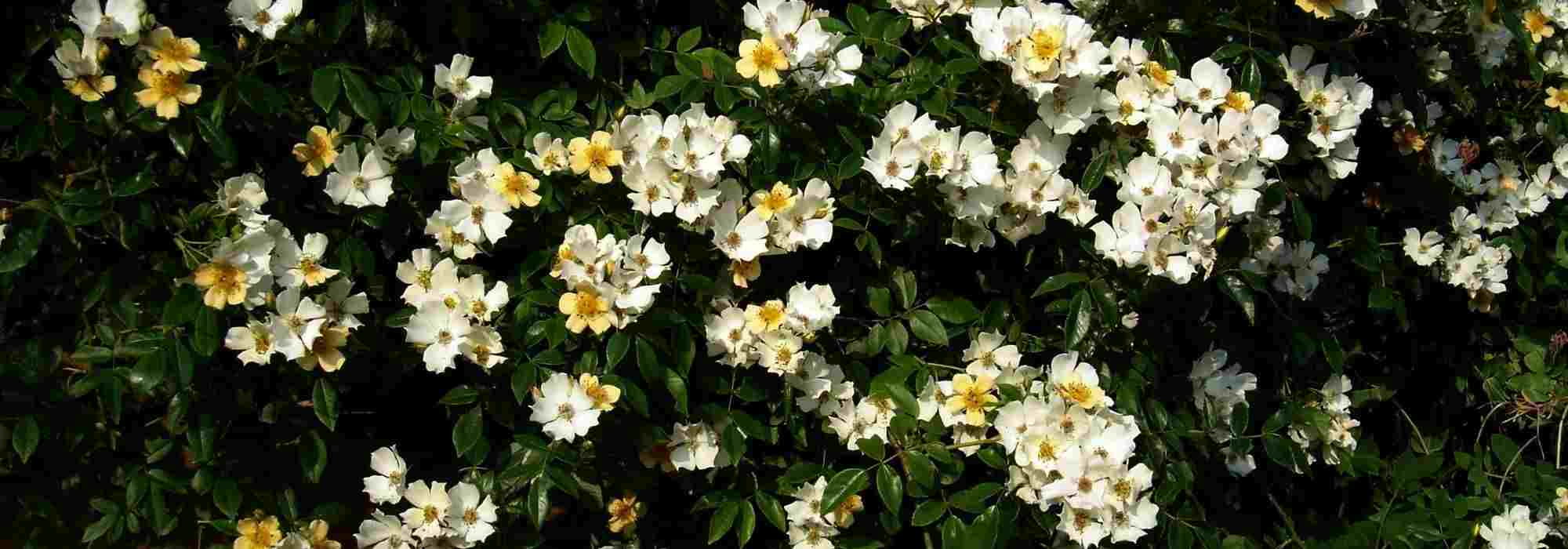
5 hardy climbing plants
Our selection for harsh winters or montane climate
Contents
Climbing plants are ideal for adding height to the garden, dressing structures or concealing unsightly constructions.
In the coldest regions, you will need to choose particularly hardy plants, capable of withstanding snow, frost, and wind without faltering. They must also endure large temperature fluctuations, with summers that can be very hot, as well as a shorter growing season than in milder areas.
Here is our selection of 5 hardy climbing plants that thrive below -15°C, suitable for even the coldest gardens.
Clematis, the essential romantic touch
Clematis are climbing, voluble plants appreciated for their magnificent and abundant white or colourful flowering. They offer a great diversity of shades, flower shapes, and habits.
Consider the Alpine clematis (Clematis alpina), which, as its name suggests, is native to the mountains and offers excellent hardiness. It blooms in spring between April and May, revealing lovely little lavender-blue bells highlighted by a white centre. After flowering, it is adorned with feathery silver fruits, extending the aesthetic interest of the plant. This robust liana reaches 3 metres in height and 1.5 metres in spread.
The Montana clematis from the Himalayas are also excellent candidates for cold climates and altitude, as they can withstand temperatures below -15°C. Opt for varieties such as:
- ‘Tetrarose’, a large liana of 7 metres with pink flowers that reveal a sweet fragrance in spring
- ‘Giant Star’, with impressive spring flowering in pink-salmon, capable of adapting to all soils and exposures
- ‘Spooneri’, which adorns itself in May-June with delicate fragrant white flowers, highlighted by a heart of yellow stamens
- ‘Double Delight’, with large double flowers exuding notes of vanilla or chocolate, appearing in spring and again at the end of summer
To grow clematis, prefer a sunny exposure to allow them to flower well, while keeping their base in the shade (using a ground cover plant, a small bush, or even a flat tile). The soil should also be well-drained.
Clematis should be trained or staked on a suitable support to allow them to develop optimally.

Clematis alpina ‘Ocean Pearl’, Clematis montana ‘Double Delight’ and ‘Tetrarose’
Read also
10 hardy evergreen shrubsThe liana rose, rapid growth and avalanche of flowers
Climbing roses are impressive climbing plants, capable of reaching over 10 metres in height. Once securely trained, their woody climbing stems will quickly adorn a pergola, arch, old tree, and conceal a wall or fence.
Climbing roses offer a wide range of colours, flower shapes, fragrances, sizes, and types of foliage. Among them:
- ‘Albertine’ produces true salmon-pink pom-poms at the beginning of summer with a sweet fragrance
- ‘Wedding Day’ is adorned in July with a cascade of white dog-roses, revealing a honey scent
- the rare thornless variety ‘Veilchenblau’ offers a true colourful spectacle in June-July, unveiling semi-double flowers of violet-lavender with a white centre, highlighted by a nest of golden stamens
- ‘American Pillar’ displays bright pink flowers illuminated with white and a heart of stamens
- the impressive ‘Filipes Kiftsgate’ with its height of 10 to 12 metres, which blooms late in the summer, revealing small white dog-roses
Hardy to below -15°C and very resistant to cold once well established, climbing roses can withstand mountain climates.
For the cultivation of your climbing rose, ensure a sunny or semi-sunny location. Pay attention to water and fertiliser during the early stages of planting. Climbing roses adapt to all types of soil, even slightly calcareous, sandy, or heavy as long as they are well-drained.
Also, find our tips for how to choose your climbing rose.
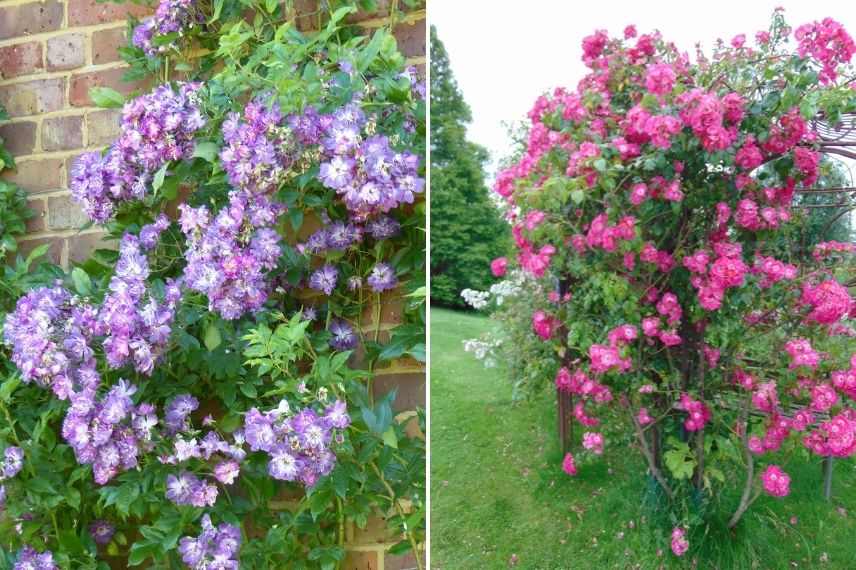
Rosa wichuriana ‘Veilchenblau’ and ‘American Pillar’
Discover other Climbers
View all →Available in 0 sizes
Available in 0 sizes
Available in 0 sizes
Available in 0 sizes
Available in 0 sizes
Available in 1 sizes
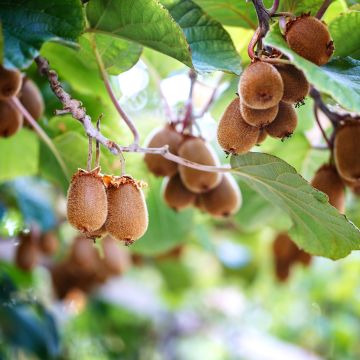
Available in 2 sizes
Available in 1 sizes
Available in 1 sizes
Honeysuckle, a flowering of fragrant trumpets
Honeysuckle is a widely grown climbing plant in gardens. It is valued for its fragrant summer flowering and ease of cultivation.
Depending on the varieties, the climber is adorned with trumpet-shaped flowers in various colours.
- Lonicera heckrotii ‘American Beauty’ reveals an abundance of pink tubular flowers with a yellow-orange centre throughout the summer, emitting a powerful floral fragrance.
- Lonicera japonica ‘Hall’s Prolific’ showcases white flowers that turn yellow, exuding an intoxicating fragrance.
- The Brown’s climbing honeysuckle, while unscented, offers an unusual display of warm, vibrant colours, combining red, coral, and orange.
- The woodland honeysuckle is adorned with fragrant cream-white flowers streaked with dark red.
- The ‘Scentsation’ honeysuckle offers an abundance of divinely fragrant white and yellow flowers.
The honeysuckle is easy to grow, requiring little maintenance, being less susceptible to diseases, and very tolerant of soil and climate conditions. The mentioned varieties also exhibit great hardiness, allowing them to withstand harsh winters down to -15°C.
Provide it with a partially shaded exposure, away from the scorching rays of the sun.
Fast-growing, reaching heights of 3 to 6 metres depending on the cultivars, honeysuckle is ideal for greening fences and trellises or for dressing up arbors and pergolas.

Lonicera heckrotii ‘American Beauty’ Lonicera periclymenum ‘Serotina’ (photo Javoy Plantes) and ‘Scentsation’
Read also
8 very hardy shrubs resistant to frostClimbing hydrangea, perfect for brightening shaded areas
Climbing hydrangeas thrive independently, requiring no support: they attach themselves spontaneously using aerial roots and small climbing roots, much like ivy. This climbing plant can reach heights of 3 to 4 metres, scaling walls, pergolas, pylons, or sheds.
In late spring or early summer (June-July), the climbing hydrangea reveals small flowers grouped in large umbels, reminiscent of delicate parasols. They are highly nectariferous, attracting pollinating insects.
- Hydrangea petiolaris, the classic variety, showcases immaculate, refined umbels that resemble lace.
- The cultivar ‘Flying Saucer’ boasts larger, more impressive, mossy-looking umbels, reaching nearly 27 cm in diameter.
- Hydrangea anomala ‘Crug Coral’, native to the mountains of Taiwan, produces soft pink-cream inflorescences in June.
Hardy down to -20°C, even -25°C, they are well accustomed to cold, showing excellent frost resistance.
The climbing hydrangea thrives in shade, away from the scorching sun, and can even flower when exposed to full north. It prefers deep, rich soil with organic matter and is only sensitive to drought. A good mulch at its base will help retain moisture and it will require regular watering during hot summers in the first few years, before becoming self-sufficient.
You will simply need to exercise a bit of patience at planting, as its growth is slow during the first 2 to 3 years, allowing time for the roots to anchor in the soil.
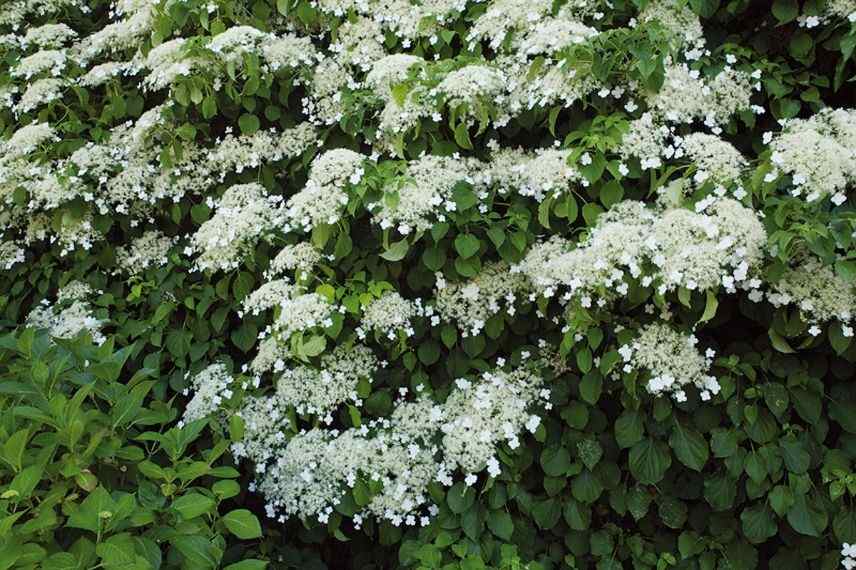
Hydrangea petiolaris
Wisteria, an impressive cascade of flowers
Wisteria is known for its abundant flowering, which can never go unnoticed. Blue, white, or pink, the flowers fall like opulent cascades, intensely fragrant.
Among the hardiest varieties suited to mountain climates, tolerating temperatures down to about -20°C, we can mention:
- the Chinese wisteria Wisteria sinensis ‘Alba’, revealing long clusters of white flowers tinged with pale yellow
- the Chinese wisteria Wisteria sinensis ‘Caroline’, with very bright blue-purple flowering, first appearing in spring and then again at the end of summer
- the Japanese wisteria Wisteria floribunda ‘Alba’, the hardiest variety, with its long clusters of soft and romantic white flowers
Wisteria is easy to grow: fast-growing, it will thrive in even poor soil, in sunny or partially shaded positions, and will only require a few maintenance prunings to contain its impressive growth. Very vigorous, this liana can indeed reach heights of up to 10 to 15 metres.
Wisteria will require sturdy support to climb and adorn porches, arbours, pergolas, old walls, or unsightly structures.
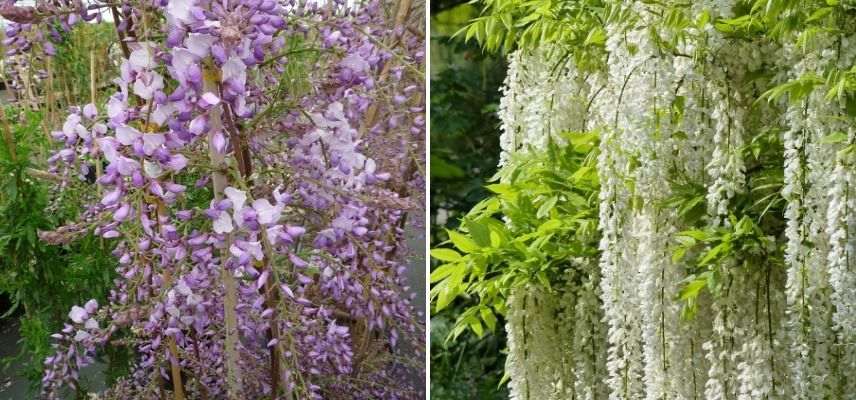
Wisteria sinensis ‘Caroline’ and Wisteria floribunda ‘Alba’
- Subscribe!
- Contents
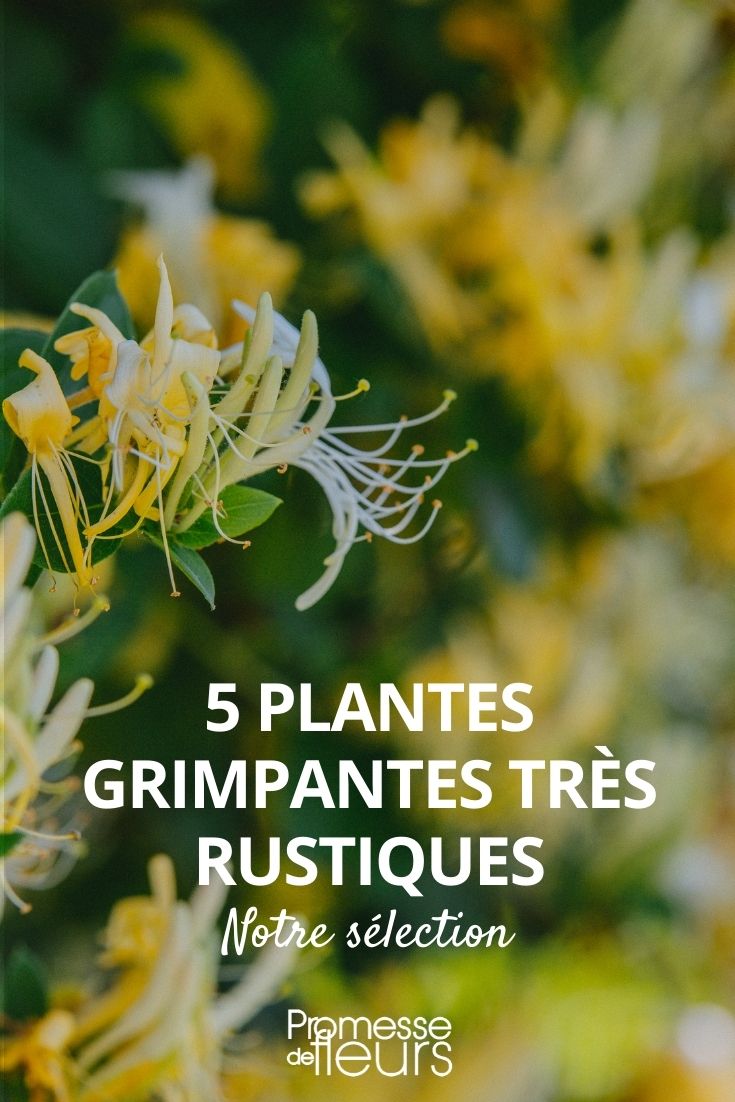































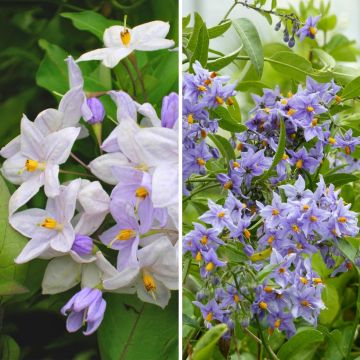
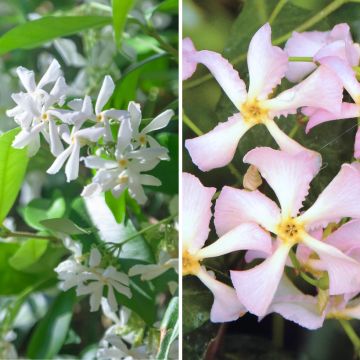

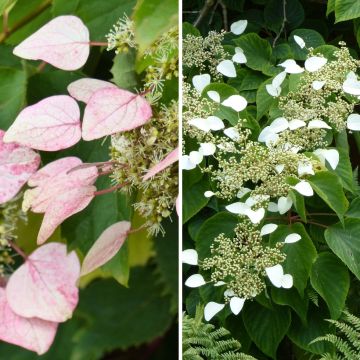
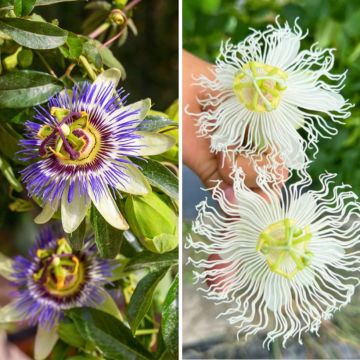

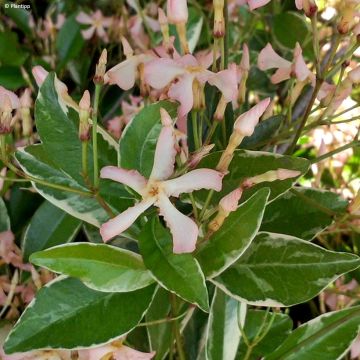
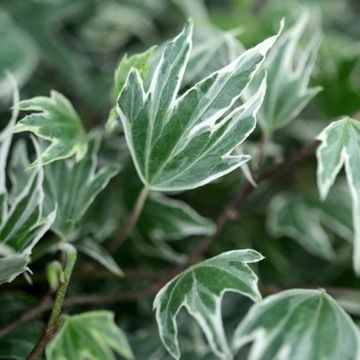
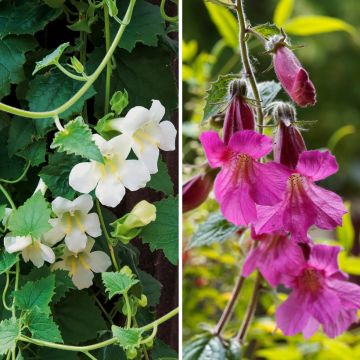
Comments